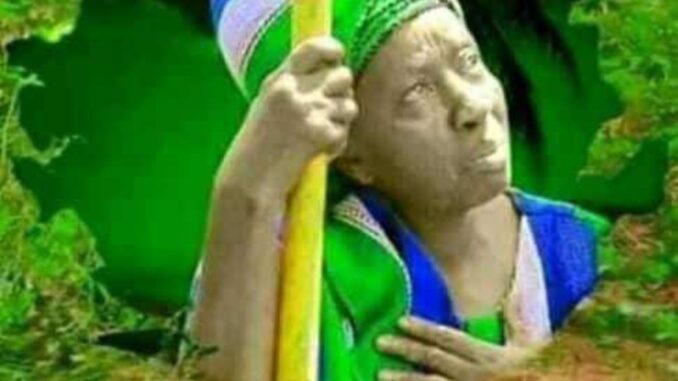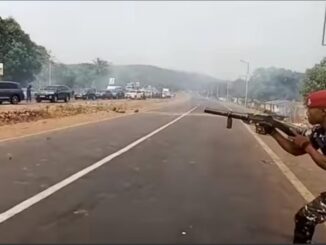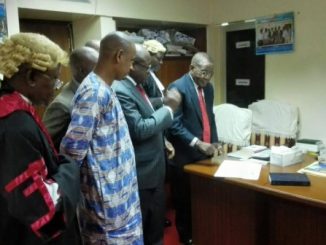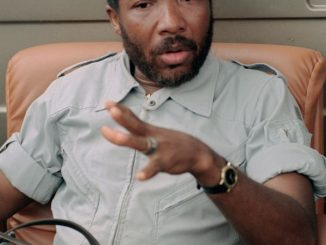
By Abdulai Mansaray : Guest Writer
An article titled “Sierra Leone- the rise, the ruin, and the reckoning of a nation” (the 3 Rs), written by Oumar Farouk Sesay, a seasoned wordsmith and Sierra Leone’s very own Wole Soyinka (it’s not an exaggeration) is known for his pioneering work in many articles, poems and books .
This is no attempt to review the article; for any attempt to do so would not only cause injurious injustice but woefully fail to capture the essence of the article in its unadulterated form. However, it is worth noting that this article pricked and pulled the heart strings of dormant feelings that have been bubbling within the volcanic fissures of the national psyche for so long.
Mr Sesay paints a canvass of our country from its nascent period of independence, takes us through a politically contoured landscape with coups and counter coups that culminates into an inevitable crescendo of self-destruction on the lee ward side. Naturally, such experiences should normally follow a period of healing, catharsis, reflection and extreme unction. Sadly, the second chance pendulum fragmented into a thousand pieces.
This phase in our country is preceded by literary architects of our time, including The Tablet newspaper, followed by the writings of Nkrumah, Amie Cesaire, Senghor, Samir Amin, Fannon, Olu Gordon, and Paul Kamara…” Other archetypes and pioneers included Kolosa Kargbo, Amadu Maddy and Dele Charlie who helped us visualised our society in its pristine form, while griots and social commentators like Afro National, Muyei Power, and Sabanoh 75 captured the nation in time- honoured capsules of melodious lyrical excellence.
Interestingly, Mr Sesay asks those of his own generation to serve as witnesses of the whole truth about “the narrative that pits the occasional success of the individual Sierra Leoneans against the backdrop of collective national failure”. As if to calibrate his disillusionment, he laments the fact that despite the nation boasting about “exceptional individuals”, but that as a people, as a country, as a nation, we have failed to achieve “collective progress”. The national narrative morphed into a myopic view, with our lenses firmly trained on “Individual achievement” that complements the “acceptance of national failure”. That is an indictment of epic national proportion.
Mr Sesay sums up this indictment and predicament as a delusion that is analogous to our “thinking that patching the holes on our side of the boat will keep us safe, even as the entire vessel is sinking”. Here, Mr Sesay suggestively invokes Aristotle’s “the whole is greater than the sum of its parts”, even though … “our tendency to prioritize insular factions over the broader society weakens the very foundation of national unity”. In other words, our collective failure to see the wood for the trees is what continues to threaten our wholesomeness as a nation.
When Mr Sesay questions how many from his generation have taken an insular focus on their families, homes and personal wealth, he does so in recognition of, and reminiscence from those school, college and university days when some of those same colleagues were breast beaters for the general good.
As pen pushers, agent provocateurs, and men of the people, who put their diplomas and degrees in the cross hairs of political and institutional demagogues, Mr Sesay warns that the façade of complacence within the personal fortresses and confidence of being well insulated will be little protection against the forces of a nation hurtling down “its downward trajectory”.
His clamour for a collective renaissance and rejig of the mind set to yesteryears of enlightenment, untamed patriotism and shift of focus from the “Me ism” back to “We ism” as the prescription and antidote to national decay. Should we allow our schooling to interfere with our education? If this call is left unheeded, will there be any rest in peace………even in death?
The paradox of human co-existence that houses the best and worst in the same psyche was exemplified in Sierra Leone and its citizens. Thanks to our unlimited arsenal of tolerance, Sierra Leoneans demonstrated unity in diversity and strength in difference.
With 14 different tribes and corresponding languages, the similarities were more prominent than the differences. Such co-existence was solidified and cemented by inter-marriages, religious tolerance and the acceptance of linguistic idiosyncrasies. There were rivalries that were expressed only in the pursuit of excellence and not aimed at the destruction of the other.
Take EE Lions VS Mighty Blackpool, Sabanoh 75 (Heavy Manners) VS Afro National, Kambui Eagles VS Wusum Stars, Kono Agricultural Show VS Kenema Cacao Show, etc. Sabanoh 75 as the name denotes was seen as a Temne “band set” and Afro National was mende leaning. Both received national support and patronage wherever they played, irrespective of the tribal or regional setting, thanks to their musical excellence and not the language of the lyrics.
The rivalry between and among the football teams were borne out of the desire to succeed and devoid of any tribal denomination.
When Kinni Brima, Lord Bongo, Kortor Yeroh, Dan Dogo, and the 14 others burst on the scene with the weekend slot on SLBS, it was a must listen programme.
For those of us who had the privilege and benefit of having a pulse at the time, it was Sierra Leone at its finest. This was a series that took the artistic brush and painted our linguistic national landscape in a brightly coloured cacophony of comedy at its most distilled and unadulterated form. The format was based on the interrelationships between the various main tribes of Sierra Leone, including Temne, Mende, Fullah, Krio, Limba, etc.
It portrayed the idiosyncratic characters of each tribe and how, through tolerance and a common understanding of belonging to one nation, put on display the linguistic differences among these tribes/languages. These differences were so expertly explored for their comedic value by their peculiar pronunciation or mispronunciation of commonly used vocabulary across the country.
Those were the days of “self-help” and “communal labour”. Communities did not wait for the government to repair the potholes that lined the access roads. Those were the days when it took a village to raise a child. The greatest strength of our politicians was their proficiency in tribalism, but even that dissipated after elections and we all lived happily ever after.
Former and President Siaka Stevens was the only leader who presided over a one -party state in a multi-party country. He decimated the opposition when he lured the then SLPP leader Salia Jusu Sherriff and made him one of his two vice presidents. With a comatose SLPP, it was left to the Fourth Estate (press), to fill the political vacuum that ensued. With practically no opposition to the APC, brave hearts like Pius Foray, Paul Kamara, Dennis Bright, Olu Gordon, Foday Kandeh, Ali Kabba and many more became the unorthodox foil and opposition.
So, how did we get here?
Mr Sesay reminds us of how we have collectively lost that collective strive for the common good. We have been railroaded into cul de sacs of “me ism.” As a nation, we have relegated and compartmentalized our focus into little pockets and parcels of tribal, regional and political affiliations.
Today, we have people who owe their loyalty more to their tribe than nationality. Many are Mende or Temne FIRST, and Sierra Leonean last; not even second. We have allowed our politicians to drive the wedge between and among us, and left us in the land of every man for himself.
What we have now is a shrinking forest (Sierra Leone). But the trees (people) will keep voting for the axe (politician), for the axe has convinced the trees that because its handle is made of wood, it is one of them. The politicians are very clever. They come ethnocentrically with their tribalism. We are amused at their jingoism and allow them to blog.
Now they have turned us against our brothers and sisters, our friends and neighbours, and our country can no longer act like one. They have put a knife on the differences and things that held us together and we have fallen apart. Now, it’s every man for himself and Allah for us all. So, who is going to speak for us? Where is that voice of reason? Where is that voice for Sierra Leone above all else?
So, how many are ready to answer the call for the collective good? Remember that honest differences of views and honest debate are not disunity. They are the vital process of policy among free men (Herbert Hoover). A house divided against itself cannot stand.
Don’t forget to turn the lights off when you leave the room.



